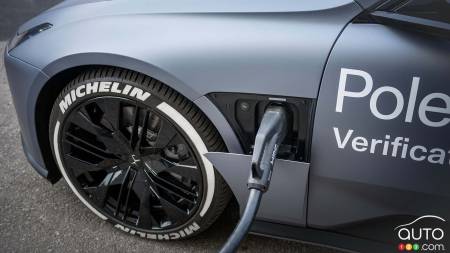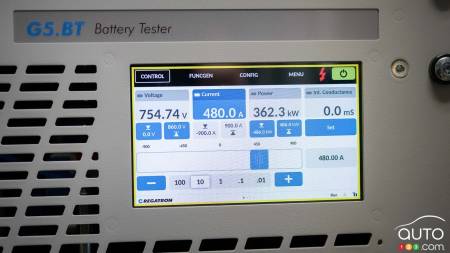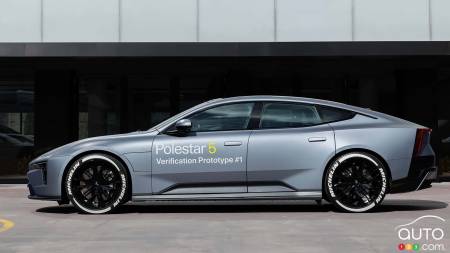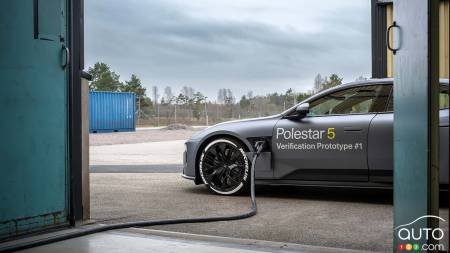• Polestar says it has been able to recharge a Polestar 5 prototype from 10 to 80 percent in just 10 minutes.
The recharging speeds of EV batteries is one of the three hottest subjects when it comes to electric vehicles, alongside range and cost. The day it becomes possible to recover a 400 km range as quickly as it takes to fill up a tank of gas, those complaints about wasting time sitting around at a charging station will fade away.
It's only a matter of time before that becomes a reality, and this week Polestar took another step towards that reality by achieving a recharge of an EV’s battery pack from 10 to 80 percent in just 10 minutes.
Until now, the best times announced were 18 minutes.
Polestar teamed up with Israeli start-up StoreDot to build an electric prototype capable of achieving the 10-minute trick. The automaker points out it achieved the fast charging time using a real car rather than in the laboratory.

StoreDot's XFC (Extreme Fast Charging) technology was installed in a prototype of the Polestar 5, a sedan scheduled for launch in 2025. Polestar explains that the battery started recharging at 310 kW and increased to 370 kW as it approached 80 percent charge. This is the opposite of what usually occurs, with recharging speed decreasing the more the battery charges up. That’s similar to what you might do when filling a glass with water, which is slowing the flow when the glass is almost full.
Polestar says the prototype used was equipped with a 77-kWh battery, but the capacity of which could theoretically be increased to at least 100 kWh. It added that engineers did not need to modify the cooling system to enable charging at 370 kW.

No information was shared on the conditions under which the test was carried out, such as temperature, which, as we know all too well in Canada, can have an effect on charging times. The secret, however, is apparently in the battery pack, which uses cells composed mainly of silicon and is compatible with existing DC charging infrastructure, so it doesn't need a specially adapted charging station.
Polestar says XFC technology could be grafted onto some of its future vehicles. Said the company, “We typically have a development cycle of two to three years, so I'd say we could put this into production within that time period."




